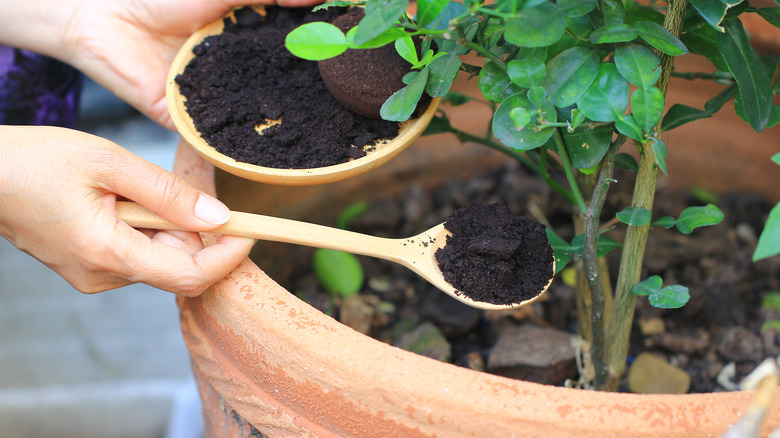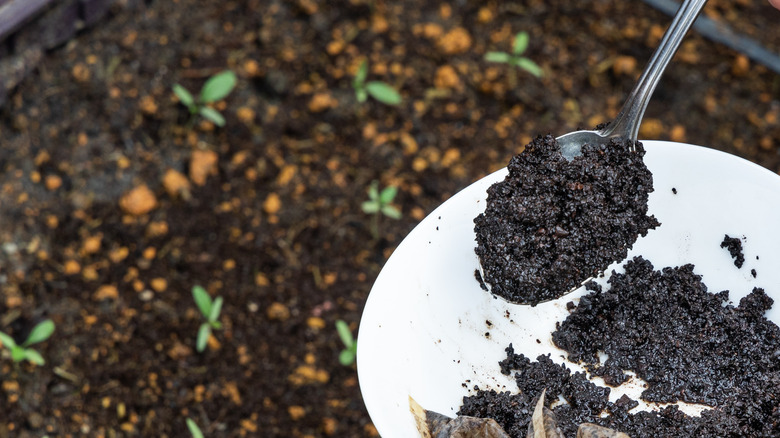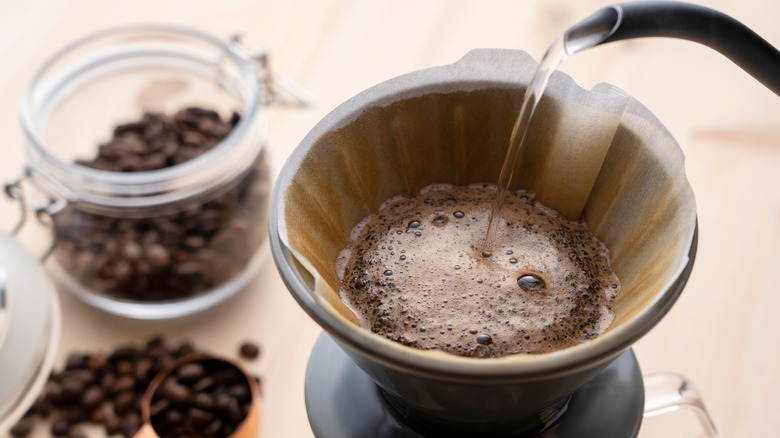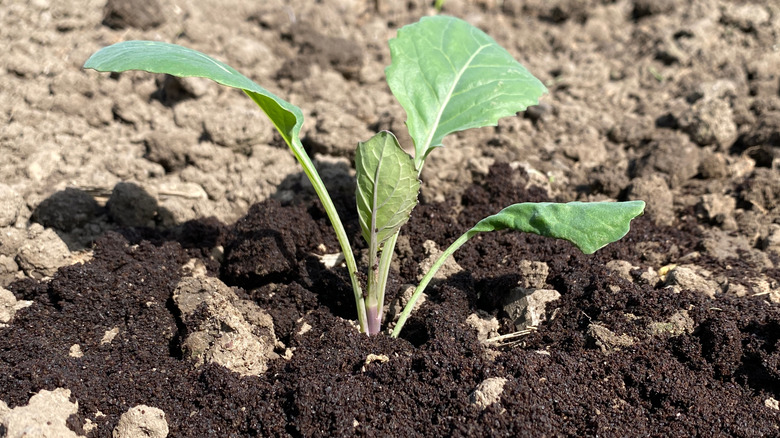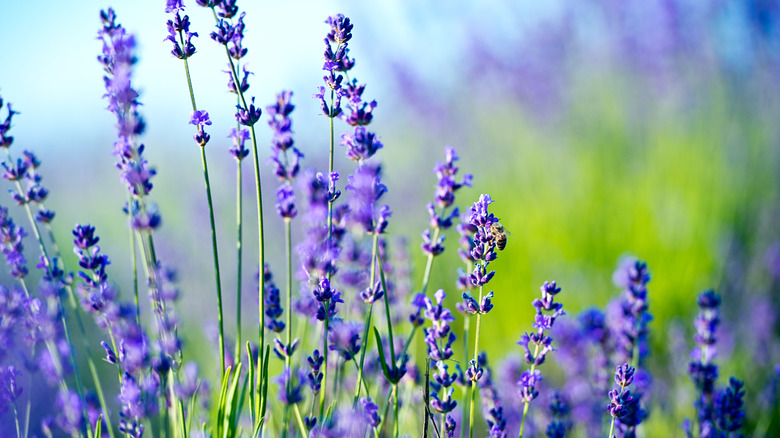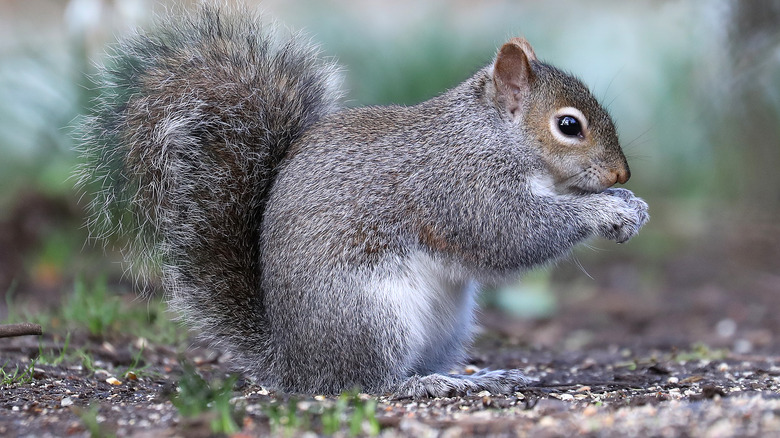How To Use Coffee Grounds As Fertilizer In Your Garden
After brewing a morning cup of joe, many gardeners opt to save the grounds and reuse them in their yards as a slow-release fertilizer. This is a fantastic way to recycle your coffee (not to mention it's as organic as you can get for a fertilizer), and many agree on the many benefits associated with coffee grounds as nutrition for the garden.
One of the main advantages associated with working coffee grounds into the soil is that it lowers its pH due to coffee's high acidity. Brewed grounds are actually pH neutral and won't affect soil's acidity, the University of Minnesota's Yard and Garden News portal notes. But that doesn't mean there aren't other benefits coffee grounds can add to the garden. Though there are plants that will take a pass on the grounds, others are happy to soak up the nitrogen and micronutrients they provide. Read on to find out what coffee grounds can add to the soil and how to use them in the garden.
How will soil benefit from coffee grounds?
A quick online search yields many results that tout coffee's acidic properties as a top reason to add it to the soil. But according to Oregon State University, once brewed, coffee grounds are actually close to a neutral pH because coffee's acid is water-soluble, ending up in your drink. So if your garden soil needs more acidity, opt for unbrewed grounds instead. On the other hand, used coffee grounds can act as a slow-release fertilizer and add some essential nutrients over time, including nitrogen, potassium, phosphorus, and micronutrients, GrowVeg notes.
Prep your coffee grounds
To prepare your coffee grounds for the backyard, brew your coffee as usual, then collect the wet leftovers and set them aside for your garden work. If you don't intend to use the grounds that day, Garden Guides recommends storing them in an airtight container and refrigerating them to avoid mold growth. Alternately, you can make a liquid plant fertilizer by steeping a coffee ground tea, Gardenista writes: Soak the grounds in water, let them steep overnight, and apply to the areas you'd like to fertilize.
Add the grounds to the soil
Once you have enough coffee grounds saved up to use in your garden, it's time to work them into the soil. First, sprinkle the grounds generously over the areas you're focusing on, but avoid creating big clumps on the soil because they can lock together and create a water barrier, according to The Spruce. Next, gently rake the grounds, working them into the soil. If you don't incorporate the grounds into the soil, they may repel water once they dry out.
Avoid coffee grounds for some plants
While gardens can benefit from coffee grounds, some plants aren't known to thrive with them in the mix. Farming Method has a list of plants averse to it, including lavender, orchids, and pothos. In addition, studies have shown that broccoli, leeks, radish, viola, and sunflower also aren't fans of coffee grounds, Constant Delights notes. Because caffeine inhibits the formation of roots in these plants (and a few more), it's best not to apply it near them.
Other benefits of coffee grounds in the garden
Along with using coffee grounds as a slow-release fertilizer, gardeners swear by some other benefits of mixing it into your soil. Some people commonly use coffee grounds as mulch and compost, The Spruce says. It's also considered a great way to deter insects and animals, especially squirrels. According to Pests Banned, squirrels dislike the smell of coffee, so sprinkling it liberally on the soil will repel them, as well as ants, snails, fleas, and mosquitos. Add more grounds occasionally, and wet the grounds to amp up the unpleasant aroma.
